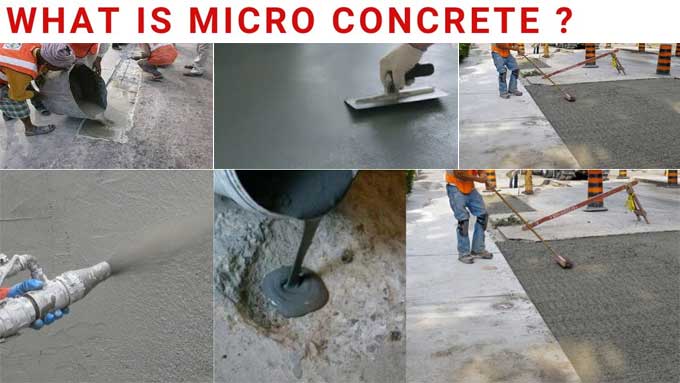
An Overview of Micro Concrete Workflows & its Key Uses

Micro concretes are cement-based coatings that can be applied to surfaces such as wood and tile to simulate concrete's look and feel at a fraction of the cost. Consequently, the surface is aesthetically pleasing and affordable.
It is about 2 mm to 3 mm thick when applied as micro concrete. Stash-free, mold-free, and non-slip, the material surface is anti-slip. The surface is therefore perfect for bathrooms, kitchens, and floors.
Workflow of Micro Concrete
Surface Preparation
Micro concrete can clean concrete surfaces with water, acids, or water blasting. Micro concrete must apply to stainless steel bars and corrosion-prone materials.
Process of Mixing
It is possible to prepare micro concrete mix manually, but if a large quantity of concrete is required, it should mix in a mixing vessel. It is common for water to micro concrete to be 1:8, depending on the mix. Stirring continuously while adding the micro concrete to water is what prepares the mixture.
Pouring
The mix should be put down quickly after being prepared to achieve the best consistency and flow. Next, smooth the mixture out and let it dry.
Uses of Micro Concrete
Both commercial and residential buildings have used micro concrete in various applications. This seamless finish is durable, modern, and seamless. This material is suitable for outdoor and indoor surfaces due to its durability.
Applications include foyers, hotels, shopping centers, open plazas, museums, office centers, garages, and other interiors. Concrete aesthetic walls and floors are cost-effective and durable. Additionally, it is a waterproof material, so it is suitable for bathrooms and kitchens.
Key Difference from Conventional Concrete
Water Demand Reduction
It initially designs to decrease water consumption as compared to regular concrete. Concrete structures damaged by aging or cracking are easy repairs with the material's ability to establish a good bond. In contrast to heavy machinery, micro concrete is cheaper and easier to repair.
Fast Drying
The covered surface of micro concrete can be functional within a day after it has been applied. Design professionals and homeowners who want to decorate surfaces in their buildings without causing any disruption can choose this material.
Placement & Handling Ease
Micro concrete mixes are available in a variety of prepackaged forms, making preparation and placement very easy. It eliminates the need for on-site concrete mix preparation, thereby reducing human error to a bare minimum. Therefore, a faux concrete finish is an easy choice for any environment that requires a surface finish. It is suitable for people with limited space and concrete laying skills who would like to use micro concrete.
Benefits of Micro Concrete
1. The application process is simple and easy.
2. There is no need for heavy machinery because compaction is not required.
3. It bonds well to almost any surface.
4. Once applied to a surface, it develops good strength.
5. They will not crack or fold due to shrinkage.
6. The surface is free of chloride and therefore safe and durable.
7. The low permeability of micro concrete makes it excellent for outdoor environments, kitchens, and bathrooms.
8. There is no need for additional additives.
9. The mold-resistant feature is excellent.
10. You can color it.
Conclusion
A cement-based coating called micro concrete can be applied thinly on various surfaces, including tiles and wood. In contrast to real concrete, it costs a fraction of the price and weighs a fraction of the weight. As a highly hygienic surface that is stain-free and hygienic, micro concrete is perfect for bathrooms, kitchens.
To learn more, watch the following video tutorial.
Video Source: Gireesh Kumar
It is also mold-free and anti-slip, which makes it an excellent choice for indoor and outdoor floor surfaces. It is clear that micro concrete will soon become a favorite of designers and architects worldwide.


